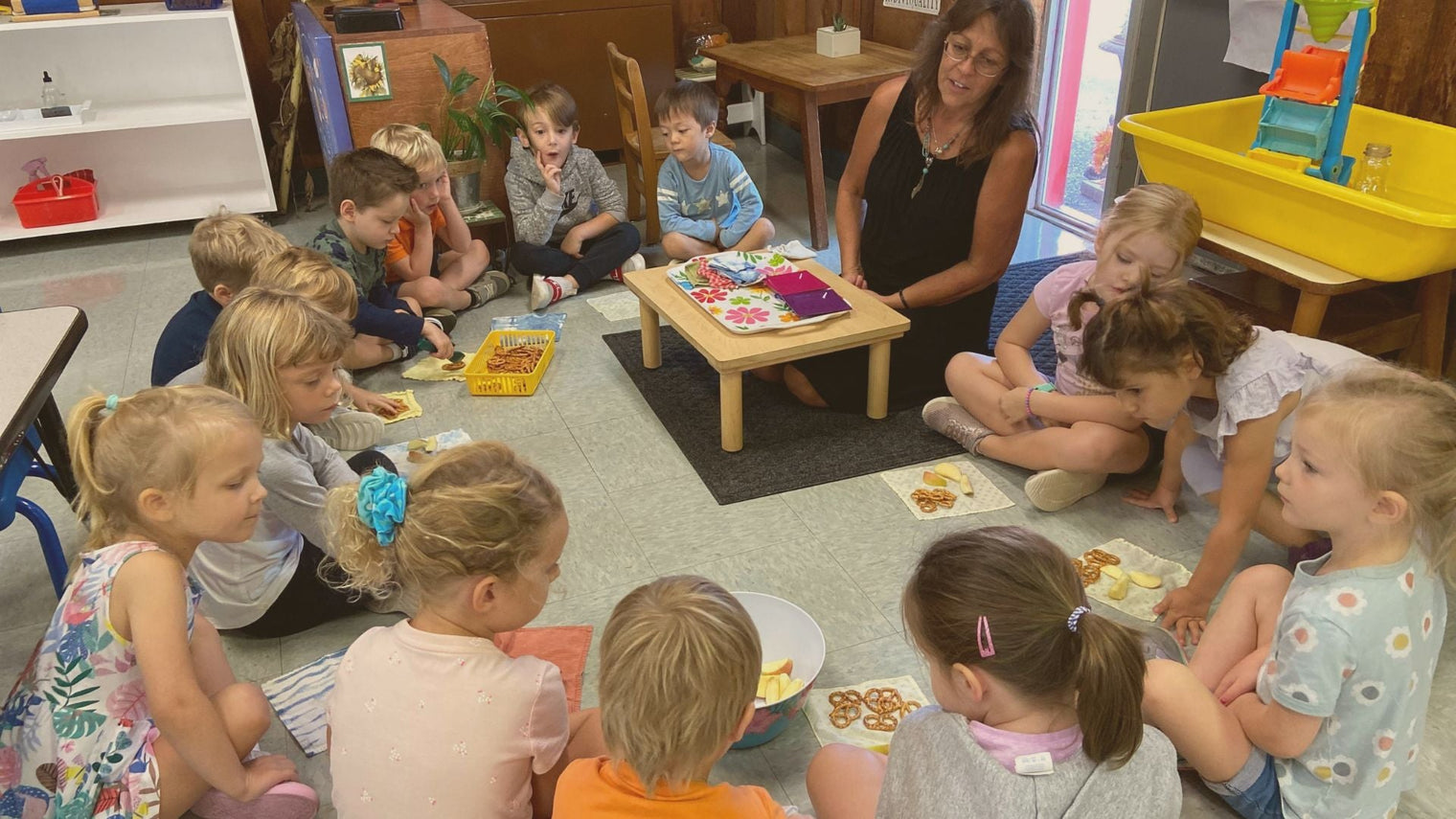Back-to-school season always comes with a mix of excitement and adjustment for families.
New routines, new classrooms, and new challenges can feel overwhelming for children and parents alike.
That’s why many families are turning to Montessori-inspired approaches at home—not just in the classroom—to create a smoother, more balanced transition into the school year.
Montessori isn’t just a teaching style; it’s a philosophy that emphasizes independence, respect, and hands-on learning. In 2025 and beyond, as education continues to evolve with technology, hybrid learning, and shifting family routines, Montessori principles are more relevant than ever.
Parents are realizing that setting up the right environment at home can make a world of difference in their child’s confidence, focus, and love of learning.
At Dannico Woodworks, we understand the power of a child-centered environment. Our handcrafted furniture is designed to support independence, creativity, and daily routines—values that Montessori families hold close.
In this guide, we’ll explore practical Montessori tips to help you and your child ease into the school year while fostering growth well beyond the classroom.
1. Create a Child-Friendly Environment at Home
Montessori emphasizes giving children the tools and spaces they need to manage their own routines. That might look like:
-
Accessible storage: Low shelves for books and school supplies so children can grab what they need without help.
-
Functional furniture: A child-sized desk or table where homework and projects feel manageable.
-
Defined spaces: A reading corner, a creative station, and a place for school essentials so children know where everything belongs.
At Dannico Woodworks, we design furniture that meets children at their level—literally. Our pieces are scaled to their size, encouraging them to take responsibility and engage with their environment naturally.
2. Build Independence Through Daily Routines
The start of a new school year often means rushed mornings and chaotic afternoons. Montessori encourages parents to slow things down and involve children in the process. For example:
-
Morning routine: Set up a clothing station so your child can choose and dress themselves.
-
Packing bags: Keep lunch containers and backpacks within reach so your child can help prepare.
-
After school reset: Teach your child to put away shoes, unpack their bag, and place homework in a designated spot.
These small acts of independence help children feel capable and reduce stress for everyone.
3. Encourage Curiosity and Hands-On Learning
School provides structure, but children’s natural curiosity doesn’t end when the bell rings. Montessori-inspired parents encourage continued exploration at home:
-
Set up shelves with open-ended materials like puzzles, art supplies, or building blocks.
-
Invite your child to help with cooking, measuring ingredients, and cleaning up.
-
Encourage outdoor learning by exploring nature, gardening, or observing wildlife.
By offering meaningful activities, you reinforce what they learn in school and show that education is a part of everyday life.
4. Focus on Practical Life Skills
Montessori education puts a strong emphasis on life skills—things like pouring water, setting the table, or folding clothes. These are not just chores; they build coordination, focus, and confidence.
Back-to-school season is the perfect time to introduce tasks like:
-
Organizing school supplies
-
Preparing snacks
-
Tidying up their personal spaces
This helps children understand responsibility and feel more connected to the family’s daily flow.
5. Keep Technology in Balance
In 2025, technology is an unavoidable part of education. From digital homework to online resources, kids are more connected than ever. But Montessori emphasizes balance.
Parents can:
-
Set up clear boundaries around screen time.
-
Encourage technology for creativity (like coding or design apps) rather than passive use.
-
Provide plenty of offline opportunities for play, exploration, and movement.
At home, a dedicated, screen-free space for reading or creative projects can give kids the break they need from digital distractions.
6. Foster a Calm Transition Space
Coming home from school can be overwhelming. Montessori families often create a “transition space” where children can unwind. This might include:
-
A cozy corner with cushions and books.
-
Calming activities like drawing, journaling, or listening to music.
-
A small shelf with mindfulness tools such as sensory bottles or calming jars.
By acknowledging the need for downtime, you help your child recharge and approach the rest of the day with more focus and positivity.
7. Collaborate with Your Child
Montessori is rooted in respect for the child’s voice. Invite your child into decision-making about routines, spaces, and learning opportunities. For example:
-
Ask how they’d like to organize their homework station.
-
Let them help choose healthy lunch ingredients.
-
Encourage them to share their goals for the school year.
When children feel heard, they are more likely to cooperate and engage.
8. Invest in Long-Term Montessori Tools
The right tools can make a huge difference in supporting independence and confidence. Montessori-inspired families often invest in:
-
Step stools for reaching counters.
-
Low-hanging coat racks.
-
Sturdy, child-sized furniture.
At Dannico Woodworks, every piece is thoughtfully crafted with this philosophy in mind. Our furniture isn’t just durable—it’s designed to grow with your child and support them in building lifelong skills.
FAQs
Do I need a Montessori school to use these tips?
Not at all. Montessori is as much a mindset as it is a school model. You can bring these principles into your home regardless of where your child attends school.
How do I know if I’m giving my child too much independence?
The key is balance. Offer opportunities for independence, but step in with support when needed. Montessori encourages guidance, not total freedom.
Is Montessori too rigid for busy families?
Montessori is flexible—it adapts to your family’s needs. You can start with small changes, like adding a child-sized shelf or involving your child in meal prep.
What’s the best age to introduce Montessori principles?
Any age. Younger children often take to it naturally, but even older children benefit from independence and structured environments.
Final Thoughts
Back-to-school season in 2025 and beyond is about more than just new supplies and schedules—it’s about preparing children to thrive in a changing world.
By embracing Montessori-inspired routines and environments, parents can nurture independence, creativity, and confidence that last far beyond the classroom.
At Dannico Woodworks, we believe that the spaces children grow up in shape how they learn and who they become.
That’s why we craft furniture designed to empower children to do things for themselves, with safety and style built into every detail.
As you prepare for the new school year, ask yourself: How can I make my home a place where my child feels confident, capable, and excited to learn every single day?

